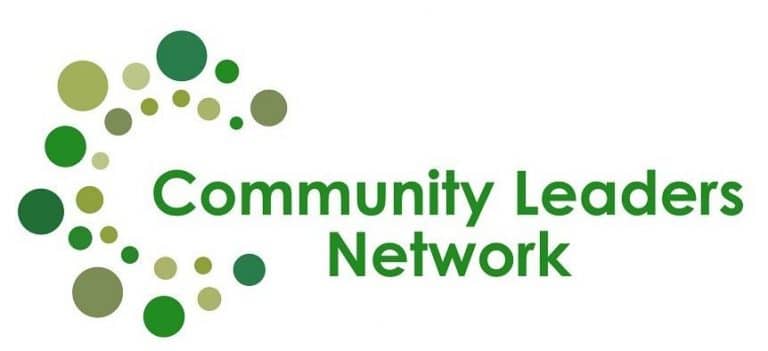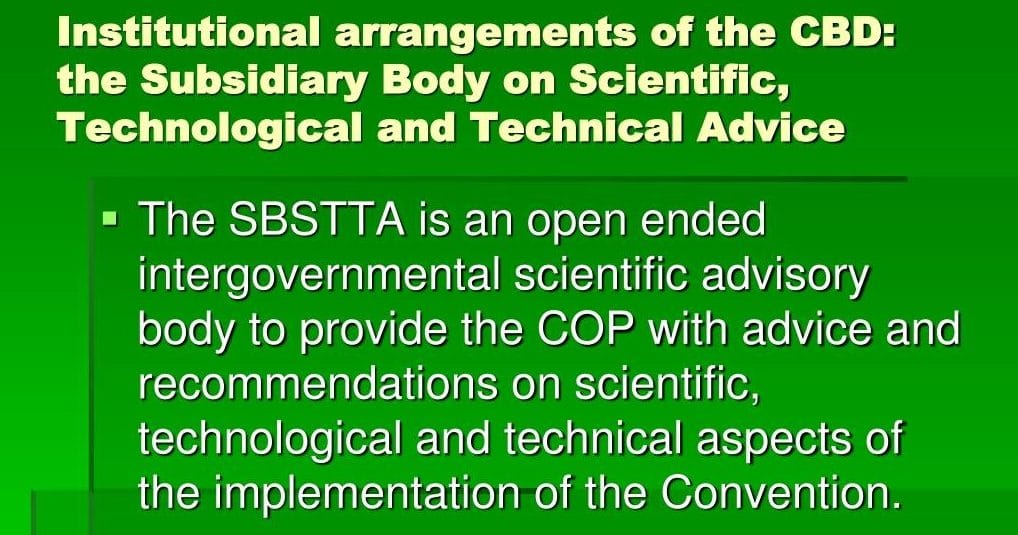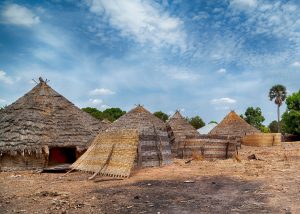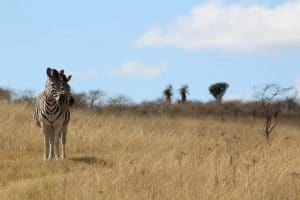
Community Leaders Network: SBSTTA Statement
Leave no voice unheard! Sustainable use of biodiversity is a human rights issue in Africa
- We, the Community Leaders Network (CLN), representing community organisations engaged in conservation in nine Southern African Countries, commend the work of the Conference of the Parties to the Convention on Biological Diversity (CBD) since its fourteenth meeting which adopted Decision 14/34 on the preparatory process for the development of the post-2020 Global Biodiversity Framework (GBF) and for providing a platform for discussions and active engagement of all relevant stakeholders.[1]
- Sustainable use is a major issue addressed in the draft post-2020 global biodiversity framework and was widely discussed in a recent thematic consultation which aimed to ensure the consideration of further views on elements related to the sustainable use of biological diversity for the post-2020 global. It forms a core part of the three objectives of the CBD – the conservation of biological diversity, the sustainable use of its components, and the fair and equitable sharing of the benefits from the use of genetic resources – that are mutually supportive and stand on equal footing.[2] It is supported by the Nagoya Protocol Nagoya Protocol on Access to Genetic Resources and the Fair and Equitable Sharing of Benefits Arising from their Utilization to the Convention on Biological Diversity Nagoya which highlights the interrelationship between genetic resources and traditional knowledge, their inseparable nature for indigenous and local communities, and the importance of the traditional knowledge for the conservation of biological diversity and the sustainable use of its components, for the sustainable livelihoods of these communities.[3] Sustainable use is also a subject of focus in a number of the COP Decisions. In addition to Decision VI/13 which is devoted to the concept,[4] Decision V/24 highlights sustainable use as a cross-cutting issue,[5] while Decision VIII/21 focuses conservation and sustainable use of deep seabed genetic resources beyond the limits of national jurisdiction,[6]
- The need for sustainable use is stressed in other relevant provisions of existing key environmental instruments: Convention on the Conservation of Migratory Species of Wild Animals (CMS)[7] and CITES (Convention on International Trade in Endangered Species of Wild Fauna and Flora)[8]; the United Nations Convention to Combat Desertification in Those Countries Experiencing Serious Drought and/or Desertification, Particularly in Africa)[9], the United Nations Framework Convention on Climate Change[10] and the Paris Agreement thereunder[11] – and the Convention on Wetlands of International Importance especially as Waterfowl Habitat (the “Ramsar Convention”),[12] the United Nations Convention of the Law of the Sea,[13] and the 2030 Agenda for Sustainable Development.[14] At the regional level in Africa, a fundamental objective of the African Convention on the Conservation of Nature and Natural Resources is to foster the conservation and sustainable use of natural resources.[15] Also , sustainable use is a key component of the Aspiration 1 dealing with inclusive growth and sustainable development under the African Union Agenda 2063.[16]
- Thus, we welcome the development that of the targets set out in the Draft post-2020 GBF, the following targets are especially relevant to the concept of sustainable use: Target 4: “By 2030, ensure that the harvesting, trade, and use of wild species of fauna and flora is legal, at sustainable levels and safe”; Target 8: “By 2030, ensure benefits, including nutrition, food security livelihoods, health and wellbeing, for people, especially for the most vulnerable through sustainable management of wild species of flora and fauna”; Target 15: “By 2030, eliminate unsustainable consumption patterns, ensuring people everywhere understand and appreciate the value of biodiversity, make responsible choices commensurate with 2050 biodiversity vision, taking into account individual and national cultural and socioeconomic conditions”; and Target 20: “By 2030, ensure equitable participation in decision-making related to biodiversity and ensure rights over relevant resources of indigenous peoples and local communities, women and girls as well as youth, in accordance with national circumstances’.
- However, we are concerned about the paucity or lack of clear framing of sustainable use as a human rights issue in the broad post-2020 GBF, and especially, in the above targets relating to sustainable use. We fear that the lack of use or unambiguous reference to rights in these targets may undermine, and in fact, ignore the rallying cry of vulnerable indigenous and local populations and communities in Africa who depend on natural resources for subsistence and survival.
- The paucity or lack of clear framing of sustainable use as a human right in Targets 4 and 8 may justify a strategy of conservation by States that excludes indigenous and local populations and communities groups from access and use of natural resources. Target 15 dealing with unsustainable consumption is unhelpful without a human rights approach as it does not distinguish between the poor and the rich, the South and the North and may therefore encourage biodiversity apartheid, a situation whereby the rich has alternative choices while the poor becomes further marginalised and deprived. The reference in Target 20 to the consideration of rights of indigenous peoples and local communities, women and girls as well as youth over natural resources is weak. It is premised on ‘national circumstances’ which indirectly may motivate states to act as they wish.[17]
- We note that the reticence to a clear framing of sustainable use as a human right is not new in the conceptualisation of biodiversity in international life and has been quite damaging to the interests of indigenous and local populations and communities. This reluctance has over the decades presented itself in different forms of conservation strategy implemented by the States including: the establishment of state protected areas; the restriction or banning of the commercial use of wildlife and the centralisation of the control of wildlife in the state; and stringent legislation effecting outright ban and criminalisation of activities in such areas. While these strategies appear innocuous and often deemed well intended, they are devastating in terms of their implications for the basic rights of communities who have lived sustainably with these resources for generations.
- Consequently, we view that the integration of a human rights approach in the wording of the targets can bring about a fundamental and transformational change in how sustainable use is understood and implemented at the national level. More importantly, it can deliver on four counts for the positive understanding and implementation of sustainable use of resources that accommodates the interests of indigenous and local populations and communities. it can help achieve developmental goals; strengthen sustainable livelihood with the biodiversity; inspire environmental justice and booster genuine accountability.
- Applying human rights approach to sustainable use is pro-development in the sense that to indigenous and local populations and communities, sustainable use is a development issue. It is necessary to achieve Goal 1 which speaks to the urgency of ending poverty in all its forms. Without doubt, allowing sustainable use by populations whose livelihood depend on the resources will help address the issue of poverty. Conceptualising the targets as a human right issue will also help attain Goal 2 on Zero Hunger as the indigenous and local populations and communities depend on the proceeds of resources not only to feed but to improve their general wellbeing. It will galvanise the realisation of Goal 10 dealing with inequality as it ensures equilibrium of access to resources that matter to their subsistence survival and in a way address biodiversity apartheid. It is relevant to other goals including Goal 13: Climate Change. Goal 14: Oceans. Goal 15: Biodiversity, forests, desertification of Agenda 2030.
- A human rights perspective on sustainable use is pro-biodiversity in the sense that it entrusts the communities who bear the greater respect with the task of protecting an important domain that is crucial to survival of humankind and the realisation of other rights. As has been observed by the UN Special Rapporteur on Human Rights and the Environment, “the full enjoyment of human rights, including the rights to life, health, food and water, depends on the services provided by ecosystems. The provision of ecosystem services depends on the health and sustainability of ecosystems, which in turn depend on biodiversity. The full enjoyment of human rights thus depend on biodiversity, and the degradation and loss of biodiversity undermine the ability of human beings to enjoy their human rights.”[18] Also, in Case Concerning the Gabcikovo-Nagymaros Project,[19] Judge Weeremantry of the International Court of Justice (ICJ) recognised that the enjoyment of internationally recognised human rights depends upon environmental protection. According to his observation made in a separate opinion: The protection of the environment is . . . a vital part of contemporary human rights doctrine, for it is a sine qua non for numerous human rights such as the right to health and the right to life itself. It is scarcely necessary to elaborate on this, as damage to the environment can impair and undermine all the human rights spoken of in the Universal Declaration and other human rights instruments.[20] Hence, the global community needs to further this narrative by entrenching a right based approach to sustainable use as a means of galvanising the implementation of these Targets not only for the purpose of enhancing the status of local communities across the world, but the protection of biodiversity worldwide.
- A human rights perspective on sustainable use is equally pro environmental justice. Environmental justice is concerned with the fair and equal distribution of environmental burdens and benefits at local, national and international levels. To exclude the rights language from sustainable use is to undermine the interests and voices in decision‐making processes of those who are most likely to be affected by environmental changes which implicate them.
- In terms of accountability, deploying a human rights approach makes indigenous and local populations and communities such communities first line of defense and therefore offers a stronger avenue to address issues that may arise from the implementation of the Targets around sustainable use at the national and regional level. Such activities include illegal trafficking, transnational crime, corruption, criminal syndicates.
- Best practices relating to accountability for sustainable use in human rights context abounds globally. Under the African regional human rights system, in Centre for Minority Rights Development (Kenya) and Minority Rights Group (on behalf of Endorois Welfare Council, the environmental and cultural significance of the subsistence use of land by indigenous peoples was part of the focus in the analysis of the African Commission on Human and Peoples’ Rights (the Commission).[21] In that case the complainants argue that the creation of a game reserve on their land is in disregard of national law, Kenyan constitutional provisions and, most importantly, certain articles of the African Charter, including the rights to property, free disposition of natural resources, religion and cultural life.[22] The Endorois community emphasised that access to their land is crucial to the securing of their subsistence and livelihood and it is inseparably linked to their cultural integrity and traditional lifestyle.[23] This cultural lifestyle embodies, the community further explains, a close intimacy with ‘grazing lands, sacred religious sites and plants used for traditional medicine’, all situated around the shores of Lake Bogoria.[24]
- In arriving at its decision, the Commission reviewed its decision in the Ogoniland case,[25] and reiterated the approach in the earlier jurisprudence of the Inter-American system in the matter of Awas Tingni.[26] Based on these decisions, the Commission took the position: For indigenous communities, relations to the land are not merely a matter of possession and production but a material and spiritual element which they must fully enjoy, even to preserve their cultural legacy and transmit it to future generations.[27] It then found that the Kenyan government had violated the Endorois’ rights to religious practice, to property, to culture, to the free disposition of natural resources, and to development, under the African Charter (Articles 8, 14, 17, 21 and 22, respectively).[28]
- Successful field examples also exist on the potential and actual practical gains for biodiversity and community members when a right based approach is deployed. For instance, the Community Based Natural Resource Management (CBNRM) in Namibia on the recovery of lion, desert elephant and black rhino show that it is important to devolve ownership rights to indigenous and local populations and communities; those involved in management of resources should benefit directly from it; and that sustainable use contributes to ecosystem integrity and species conservation while generating income and diversified livelihood options
- Accordingly, we recommend as follows:
- There is an urgent need for proper framing of rights as an overarching concept in the content impacting communities and their resources and the implementation of the Targets dealing with sustainable use of resources
- There is need to build partnerships across various secretariat of environmental instruments at the UN, regional and national levels relevant to biodiversity to align with a right based approach to sustainable use impacting communities and their relationships thereto.
- There is a need for a more effective engagement with the CBD’s ongoing process to develop the post-2020 Global Biodiversity Framework that respects rights of indigenous and local populations and communities to sustainable use and mainstream human rights in ensuring a biodiversity is valued, conserved, restored and wisely used
- Improved participation and empowerment of indigenous and local populations and communities in the deliberations of the CBD
- Promotion of best practices on rights based approach to sustainable use
BOTSWANA
Gakemotho Satau The Trust for Okavango Cultural and Development Initiatives (TOCaDI)/ Kutlwano Russel
Mababe Zokotsama Community Development Trust / Tumeleng Mogodu Mababe Zokotsama Community Development Trust / S.K. Moepedi Okavango Kopano Mokoro Community Trust / Kerapetse Bantu Peter
Tcheku Community Trust / Amos Ben Mabuku Chobe Enclave Community Trust –Former Chairperson
MALAWI
Malidadi Berlings Langa Board Chairman Kasungu Wildlife Conservation Association / Chifundo Dalireni Branch Manager Wildlife and Environmental Society of Malawi / Dickson Saka Kasaungu Wildlife Association
NAMIBIA
Hilda N. Nathinge Vice Chairperson of the North Central Conservancy, Representing 9 conservancies / Max Mayemburuko Chairperson of the Kavango East and West Conservancy Community Forest Associations (Representing 6 conservancies) / Theo Naruseb Chairperson of the Erongo Conservancy Association (Representing 4 conservancies) / Brisetha Hendricks Chairperson of the Southern Conservancy Association / Stein Katupa Kunene Conservancy Regional Association – Secretary to the Conservancy Association (Representing 40 Conservancies) / Zaack Dirkse Representing Southern Conservancies (6 Conservancies) / Geoffrey Tukuhuphwele Zambezi Conservancy Chairperson (Representing 15 Conservancies and one CBO) / Deoclearancia Dax Manager #Khoadi//Hôas Conservancy / Judy Melikie Huab Conservancy – Chairperson / Tommy Adams Torra Conservancy – Chairperson / Gerson //Aiseb Sorris Sorris Conservancy – Chairperson
SOUTH AFRICA
Dr Lamson Maluleke Technical Advisor Makuleke Communal Property Association, Makuleke community / Lungelo Noluthando Dludla Youth in Support of CBNRM
TANZANIA
Mohamed Kamuna Community Areas Wildlife Consortium /Chifundo Dalireni Tanzania Natural Resource Forum / Georgina Gorge EECT/ George Wambura / CWMAC
ZAMBIA
Dr Rodgers Lubilo Chairman, Zambia National CBNRM Forum
ZIMBABWE
Bulilima District
Never Ncube CAMPFIRE Inter-ward Chairperson / Delani Mabhena Councillor Malanswazi Ward / Phillip Mpofu CAMPFIRE Chairperson Khame Ward / Zoolakes Nyathi Council Chairperson / Morning Manguba Headman; Isaac Msebele CAMPFIRE Chairperson Ndolwane Ward / Land Ndebele Finance Committee Chairperson; Innocent Mavunela Conservation Committee Chairperson
Chipinge District
Patson Simango CAMPFIRE Chairperson Mahenye Ward / Liberty Chauke Campfire Association – Mahenye Communal land / Kumbula Jimmy CAMPFIRE Chairperson Mtandahwe Ward / Naison Ndhlovu Mahenye Ward Councillor / K. Njanjeni Mtandahwe Ward Councillor
Hwange District
Nyalani Mgaduwi CAMPFIRE Chairperson Sidinda Ward / Chief Shana / Sinikiwe Nyathi Sidinda Ward Councillor / Jabulani Ndubiwa, CAMPFIRE Elder Jambezi Ward
Mbire District
Ishmael Chaukura CAMPFIRE Inter-ward Chairperson Masoka Ward / Promotion Dzomba Village Head Masoka Ward / Sarudzai Goredema CAMPFIRE Chairperson Masoka Ward / Oscar Marowa Committee Member Masoka Ward / Public Museruka Committee member Angwa Ward / Ishmael Jack CAMPFIRE Vice Chairperson Angwa Ward / Julius Chokubooka CAMPFIRE Treasurer Angwa Ward / Justin Mawachi CAMPFIRE Secretary Angwa Ward / Cossam Chikondoma CAMPFIRE Vice Secretary Angwa Ward
Tsholotsho District
Godfrey Ndlovu CAMPFIRE Inter-ward Chairperson / Chief Tategulu / Chief Matupula / Chief Siphoso
[1] United Nations, Comprehensive and participatory process for the preparation of the post-2020 global biodiversity framework, CBD/COP/DEC/14/34, 30 November 2018.
[2] The Convention on Biological Diversity of 5 June 1992 (1760 U.N.T.S. 69);
[3] Nagoya Protocol on Access to Genetic Resources and the Fair and Equitable Sharing of Benefits Arising from their Utilization to the Convention on Biological Diversity, Doc.: UNEP/CBD/COP/DEC/X/1 of 29 October 2010, preamble
[4] www.cbd.int/decision/cop/?id=7187 COP
[5] www.cbd.int/decision/cop/?id=7166
[6] www.cbd.int/decision/cop/?id=11035
[7] Convention on the Conservation of Migratory Species of Wild Animals UNTS Volume Number: 1651, preamble
[8] Convention on international trade in endangered species of wild fauna and flora UNTC Volume Number 14537 which calls for the protection of the flora and fauna for the present and future generation
[9] United Nations Convention to Combat Desertification in those Countries Experiencing Serious Drought and/or Desertification, Particularly in Africa United Nations, Treaty Series , vol. 1954, p. 3, article 19(1)(c) which seeks to empower capacity building of States for the conservation and sustainable use of natural resources;
[10] United Nations Framework Convention on Climate Change (UNFCCC) (1992) ILM 851; Art 3(4) on the recognition of sustainable development and 3(5) on sustainable economic growth ins State parties especially developing states
[11] Paris Agreement under the United Nations Framework Convention on Climate Change, adopted 30 Nov.- 11 Dec. 2015 at the 21st Sess., Conference of the Parties, fccc/cp/2015/L.9/Rev.1 (Paris Agreement 2015).Preamble on equitable access to sustainable development, sustainable lifestyle and sustainable consumption while article 6 generally deals with sustainable development
[12] Convention on wetlands of international importance especially as waterfowl habitat UNTS Volume Number 14583, art 3(1) on the wise use of wetlands
[13] Convention on the Law of the Sea, Dec. 10, 1982, 1833 U.N.T.S. 397, art 119(1)(a) on the need for States to maintain or restore populations of harvested species at levels which can produce the maximum sustainable yield
[14] United Nations General Assembly Transforming our World: the 2030 Agenda for Sustainable
Development, A/res/70/1, adopted by the General Assembly on 25 Sep. 2015
[15] Revised African Convention on the Conservation of Nature and Natural Resources. Share: Date of Adoption: March 07, 2017
[16] Agenda 2063 Final Edition, April 2015 The Africa We Want Para 18
[17] AO Jegede, Protecting indigenous peoples’ land rights in global climate governance’, in S Duck, S Jodoin and A Johl (eds) Integrating human rights in global climate governance (Routledge, 2018) 199-212
[18] Report of the Special Rapporteur on the issue of human rights obligations relating to the enjoyment of a safe, clean, healthy and sustainable environment
[19] Case Concerning the Gabcikovo-Nagymaros Project (Hungary/Slovakia), [1997] I.C.J. Rep. 7 (Gabcikovo-Nagymaros Project case)
[20] Gabcikovo-Nagymaros Project case (n 19 above) 9-92 per Judge Weeremantry
[21] Communication 276/03, Centre for Minority Rights Development (Kenya) and Minority Rights Group (on behalf of Endorois Welfare Council) (Endorois case) 27th Activity Report: June- November 2009, 237
[22] Endorois case (n 21 above) para 21
[23] Endorois case (n 21 above) para 16
[24] As above
[25] Communication 155/96, Social and Economic Rights Action Center (SERAC) and Center for Economic and Social Rights (CESR) v Nigeria 15th Activity Report: 2001-2002 (Ogoniland case)
[26] Mayagna (Sumo) Awas Tingni Community v Nicaragua, Inter-American Court of Human Rights 31 August 2001 (Awas Tingni case); for an analysis of this case see SJ Anaya & C Grossman ‘The case of Awas Tingni v Nicaragua: A new step in the international law of indigenous peoples’(2002) 19 Arizona Journal of International & Comparative Law 1
[27] Awas Tingni case (n 26 above) paras 148-149
[28] African (Banjul) Charter on Human and Peoples’ Rights, adopted 27 June 1981, OAU Doc. CAB/LEG/67/3 rev. 5, 21 I.L.M. 58 (1982), entered into force 21 October 1986



